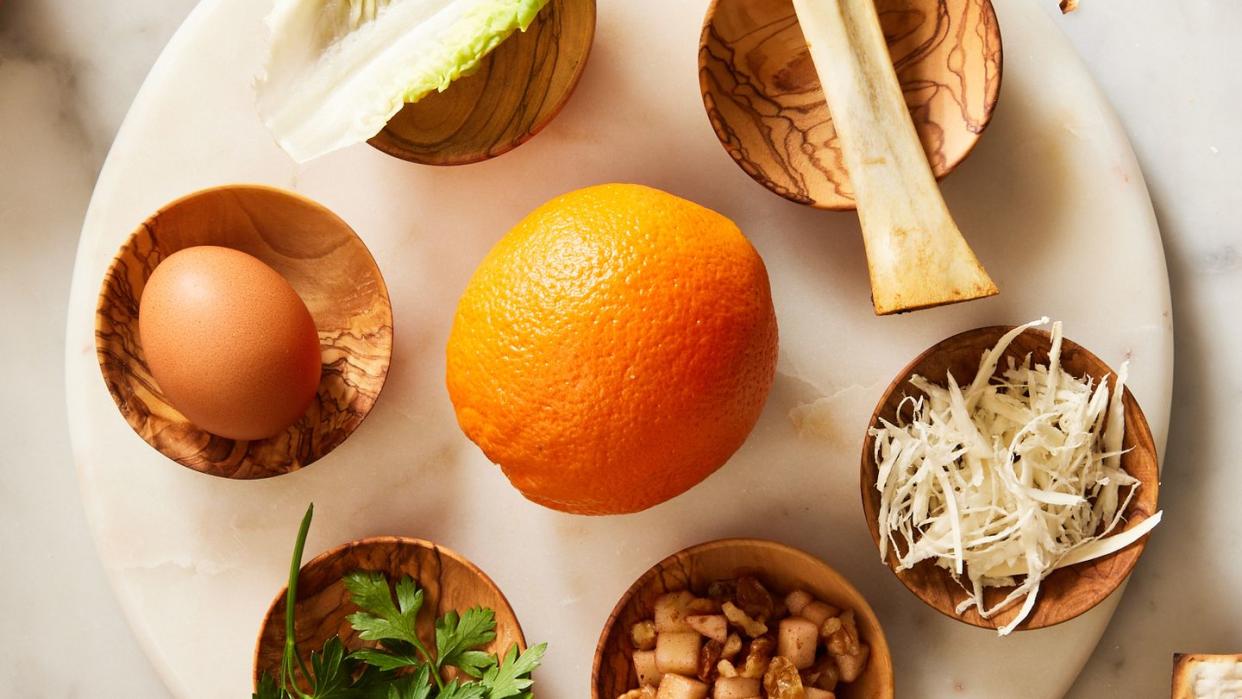Everything You Need To Know About Making A Seder Plate For Passover

Passover, or Pesach, is a Jewish holiday that celebrates the Israelites' escape from slavery in Egypt. This year, Passover begins on the evening on April 22 and runs through the evening of April 30. The holiday is full of traditions, especially when it comes to food. On the first two nights is the Seder, which features the symbolic Seder plate.
In addition to the Seder plate, it's customary for each person at the table to drink four cups of kosher wine. Plenty of other traditional dishes, from appetizers to desserts, are passed around. Here are some Passover recipes to get you started, including gefilte fish, matzo ball soup, and chocolate-covered macaroons.
Now, what goes on a Seder plate? Here's what many of them include.
Charoset
Charoset is a medley of apples, walnuts, and raisins that's sweetened with honey, spices, and kosher wine. The spread represents the mortar that enslaved Jews used to build pyramids.
Beitzah (Egg)
A hard-boiled egg, or beitzah, is placed on the plate to symbolize the cycle of life and also the hagigah sacrifice, according to My Jewish Learning.
Zeroah (Shank Bone)
Before the Jewish people left Egypt, a lamb was offered as a paschal sacrifice, which, during the Seder, is represented by a shank bone, according to Chabad.org. This is one item on the plate that's not eaten.
Maror and Chazeret (Bitter Herbs)
Two bitter herbs—maror and hazeret—are used on the Seder plate to represent the bitterness of slavery. Many people use horseradish to represent maror and romaine lettuce for hazeret, according to My Jewish Learning.
Karpas (Green Vegetable)
Karpas symbolizes spring and the season's harvest. It also represents the flourishing of the Israelites when they first arrived in Egypt, before they were enslaved. Parsley is often used for this green vegetable.
Matzo
During Passover, chametz, or leavened bread, and baked goods aren't eaten, which makes matzo recipes popular during the holiday. Three pieces of matzo are also wrapped in a cloth and placed near the seder plate to represent the bread that was unable to rise when the Jewish people fled Egypt.
Salt Water
A bowl of salt water is placed near the seder plate to represent the tears of the enslaved Jewish people. The karpas is dipped into the salt water and eaten during the meal.
Optional: Orange
According to the book Like Bread on the Seder Plate: Jewish Lesbians and the Transformation of Tradition, over the past few decades some people have chosen to add an orange to the center of their Seder plate. This is a gesture of solidarity with the Jewish LGBTQ+ community and other marginalized Jews.
You Might Also Like

